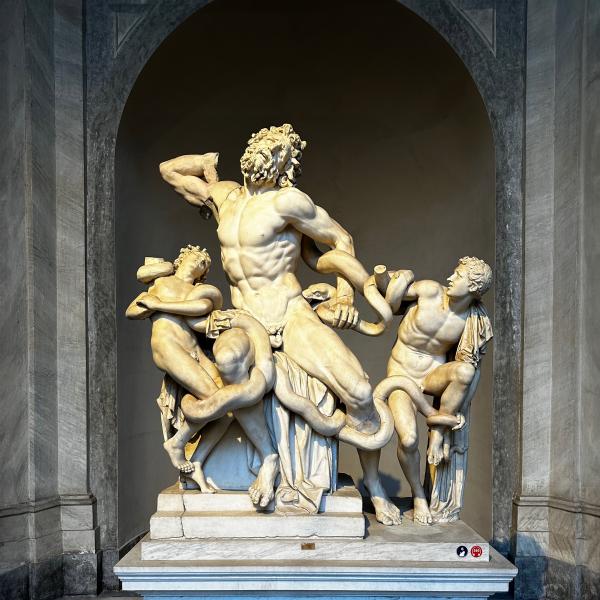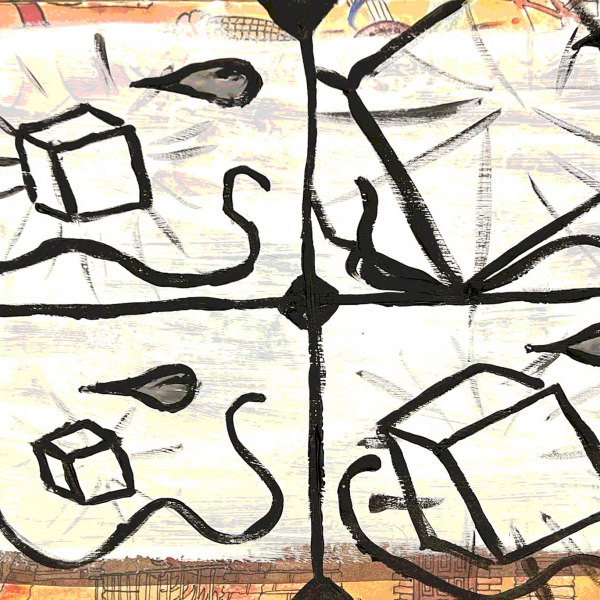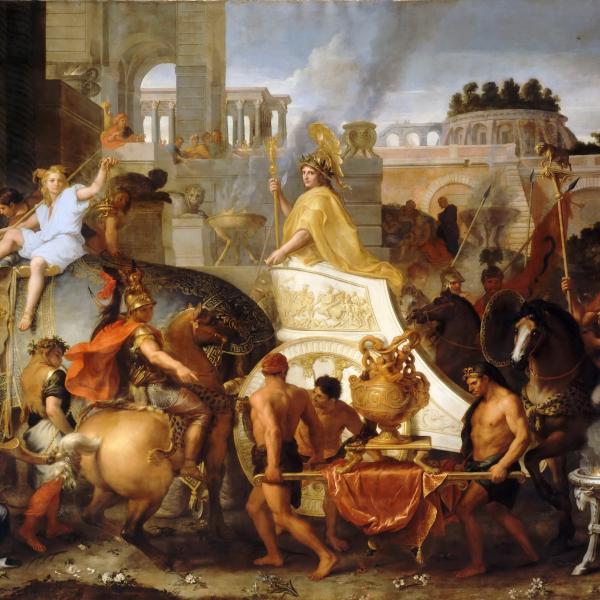“Are we allowed to show the monster as a human being?” That was the question posed by the German tabloid Bild at the release of the 2004 film Downfall, which portrayed Adolph Hitler’s final 10 days of life, broken and pathetic, in his Berlin bunker. A decade later, literary scholar Erin McGlothlin has upended that question.
In her current book project, which she is completing as a Mid-Career Faculty Fellow in the Center for the Humanities, she takes humanizing representations of Holocaust perpetrators as a given — indeed, scores of fictional and factual portrayals of perpetrators in recent years have broken that taboo. Instead, her project, “Constructing the Mind of the Holocaust Perpetrator in Fictional and Documentary Discourse,” aims to lay out how writers and filmmakers lead their audiences through the perpetrator psyche. McGlothlin breaks new ground with the first full-length study to take this approach.
“When literary research has turned to depictions of Nazi perpetrators, it has tended to view them as evil, incomprehensible Others,” says McGlothlin, an associate professor of German and Jewish Studies. “If we call them monsters and sadists, if we say they have no morals or ethical framework, then we can say that none of us would ever do that. That’s problematic. After all, the Holocaust was a human event. Humans, with their complicated and ambivalent psychologies and moral beliefs, perpetrated it.”
Below, McGlothlin shares more detail about her project.
Briefly, please share a summary of your book project.
I’m looking at a number of texts and films [such as Hannah Arendt’s Eichmann in Jerusalem, Edgar Hilsenrath’s The Nazi and the Barber and Gitta Sereny’s Into that Darkness] that look either at the consciousness of real-life perpetrators or create fictional perpetrators through which they explore these questions of consciousness.
 What do you observe about the depiction of the perpetrator in the feature film Hannah Arendt, for example?
What do you observe about the depiction of the perpetrator in the feature film Hannah Arendt, for example?
All of the historical persons in the film, including Arendt, her husband, Mary McCarthy, the judges and prosecutor at the trial, are depicted by actors; and we understand as viewers that for this reason this is a quasi-fictional rendering of their experiences, even if it’s based on historical fact. Adolph Eichmann, however, is not played by an actor. When he is shown, it is not in a recreated scene but in historical footage. (The one exception is the film’s introductory scene, which depicts his abduction in Argentina. But the figure who is abducted is cast in shadow and is not recognizable as Eichmann in any case.) In its depiction of courtroom scenes, the film thus goes back and forth between recreated scenes (when it shows the spectators, or judges, or Arendt herself) and documentary footage of the real Eichmann. As I read it, by not allowing Eichmann to be portrayed as any other historical figure (that is, by an actor), Margarethe von Trotta’s film places him outside the bounds of fictional representation or recreation. Contradicting Arendt’s insistence that Eichmann embodies a banal sort of evil (an assertion with which the film grapples), the film, with these aesthetic choices, reinscribes him as the mythically evil Other.
How do you approach this film differently as a literary scholar than, for example, a historian?
Historians are interested in figuring out who Eichmann was and pinning down the precise reasons why he so zealously participated and even led the Nazis’ genocidal project. I’m more interested in what sorts of representations of him have circulated and how they function, especially for today’s readers and viewers. So, I’m not asking “is this image of Eichmann accurate?” but rather “what does this image of Eichmann say about our ideas of evil, of perpetrators, of the Holocaust, and how does it function in our contemporary memory of the Holocaust?”
Is it possible to portray perpetrators as human without seeming sympathetic?
I’m thinking of Claude Lanzmann’s Shoah, a nine-and-a-half-hour documentary that came out in 1985 after 11 years of interviews. Lanzmann interviewed several perpetrators, mostly with a hidden camera. In his own writings, Lanzmann has said he was not interested in what makes these guys tick; he was trying to get the truth. But if you look at the scenes, an interesting psychological portrait of the men emerges. The scenes show these men struggling to integrate what they’ve done with what they know about the Holocaust. In one of my chapters, I look at the interview of a man named Grassler, who was an administrator of the Warsaw Ghetto. You see him admit the Holocaust in the interview, but he claims that, at the time, he thought his mission was to keep people alive in the Warsaw Ghetto. But Nazi policy allowed and even encouraged a situation in which tens of thousands of the Jewish inhabitants died of disease and starvation; then in 1942 most of the Warsaw Ghetto was shipped to the Treblinka death camp. You can see him struggling to try to integrate these incontrovertible facts into his life story and self image. I’m interested in how this scene and others are played out. It’s agonizing. It’s not sympathy, but there are moments of recognition of that human dilemma.
 What draws you to study the Holocaust?
What draws you to study the Holocaust?
My father was very interested in the Holocaust. He was two years too young to fight in World War II. He and his mother lied at a recruiting office, but they still didn’t take him. His whole life he felt like he should have been part of the liberation of Europe. Somehow I inherited this interest from him. But I’ve always been interested in both sides of the story. As a Germanist, I’m really interested in the German story of this perpetration, and as a scholar of Jewish Studies, I think it’s critical that we attend to the experience of the survivors and victims. I’m constantly going back between these areas and trying to link them.
I’m always thinking about the introduction as I’m working on the book. Every few months, I find a new hook — something comes up in the media. A few years ago, a high school teacher asked her students to write a narrative from the perspective of Nazis persecuting Jews. Just the other day, I read a review of an Israeli book about a character who’s writing a book from the perspective of Hitler. These are burning questions still today. It feels like it has relevance. That’s exciting for me.
Is it psychologically difficult to work in this area?
Yes and no. It’s sort of like the work of EMTs [emergency medical technicians]. They create a buffer zone for themselves so they can perform the work but allow distance so they’re not personally touched by the work. Over the years, I’ve created that space, although at times it’s reduced to nothing. Some things will really strike me. I’ve had nightmares.
What do you hope readers take away from your book?
When The Nazi and the Barber came out in English translation, 65 German publishers had turned it down. [The fictional first-person narrative of a Nazi perpetrator was published in 1971.] When some of these perpetrator representations have come out, the reaction has been, “We don’t want to deal with that.” I want readers to be able to delay their impulse to immediately reject these representations and have some tools with which to evaluate them. Some depictions of perpetrators are really reprehensible but others teach us something. I want the reader to be able to make that distinction.




